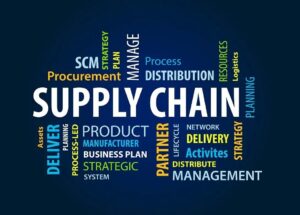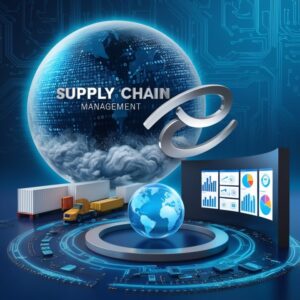WPL Auction 2026 : The Ultimate Guide to Women’s Premier League’s Big Day
Supply Chain Excellence: 7 Proven Strategies for Unmatched Growth

Supply Chain
Supply Chain Excellence: Transforming Global Logistics, The global supply chain is the backbone of modern commerce, connecting manufacturers, suppliers, and consumers across the world. Over the past decade, technological advancements and innovative strategies have significantly improved efficiency, transparency, and resilience in supply chain operations. From artificial intelligence to blockchain, the latest innovations are reshaping the landscape of global logistics. This article explores key supply chain innovations, their impact, and the future of logistics management.

-
Artificial Intelligence and Machine Learning
Artificial intelligence (AI) and machine learning (ML) are revolutionizing supply chain management. These technologies enhance demand forecasting, optimize inventory management, and improve decision-making processes. AI-powered predictive analytics help businesses anticipate market trends, reduce waste, and minimize costs.
AI in Demand Forecasting
Traditional demand forecasting methods rely on historical sales data, which can be inaccurate due to market fluctuations. AI algorithms analyze vast datasets, incorporating variables such as weather patterns, economic indicators, and social media trends to provide accurate demand predictions. Companies like Amazon and Walmart use AI-driven systems to streamline inventory replenishment, reducing stockouts and overstock situations.

AI in Logistics and Route Optimization
AI also plays a crucial role in logistics and transportation. Smart algorithms optimize delivery routes, considering factors like traffic conditions, fuel consumption, and delivery schedules. For example, UPS uses an AI-driven system called ORION (On-Road Integrated Optimization and Navigation) to reduce delivery times and fuel costs, saving millions annually.
-
Blockchain for Transparency and Security
Blockchain technology is enhancing supply chain transparency and security by providing a tamper-proof, decentralized ledger for recording transactions. This innovation improves traceability, reduces fraud, and enhances trust among stakeholders.

Applications in Supply Chain
- Product Authentication: Companies like IBM and Walmart use blockchain to track food products from farm to store shelves, ensuring authenticity and reducing contamination risks.
- Smart Contracts: Automated contracts ensure compliance and expedite payments when predefined conditions are met, reducing delays and disputes.
- Fraud Prevention: Blockchain minimizes the risk of counterfeit goods entering the supply chain by verifying product origins and authenticity.

-
Internet of Things (IoT) and Real-Time Tracking
IoT is transforming supply chain visibility by enabling real-time tracking of goods, improving efficiency, and reducing losses. IoT sensors collect data on temperature, humidity, location, and handling conditions, ensuring product integrity.
IoT Applications in Logistics
- Cold Chain Management: Perishable goods like pharmaceuticals and food products require precise temperature control. IoT sensors monitor conditions in real-time, alerting stakeholders to deviations.
- Fleet Management: GPS-enabled IoT devices track shipments, optimize routes, and enhance vehicle maintenance through predictive analytics.
- Warehouse Automation: Smart warehouses use IoT-enabled robotics for automated picking, packing, and inventory management, reducing human error and operational costs.

-
Robotics and Automation
Automation and robotics are revolutionizing warehouse and distribution center operations, improving efficiency and reducing labor costs. Advanced robotics perform tasks such as picking, packing, and sorting with greater accuracy and speed.
Robotics in Warehousing
- Automated Guided Vehicles (AGVs): Used in warehouses to transport goods autonomously, reducing reliance on manual labor.
- Robotic Picking Systems: AI-powered robotic arms handle picking and packing operations, increasing speed and reducing errors.
- Collaborative Robots (Cobots): Work alongside human workers to improve productivity and safety.

-
Sustainable Supply Chain Innovations
Sustainability is becoming a core focus in supply chain management, with businesses adopting eco-friendly practices to reduce carbon footprints and waste.
Green Supply Chain Practices
- Electric and Autonomous Vehicles: Companies like Tesla and Amazon are investing in electric and self-driving trucks to reduce emissions.
- Sustainable Packaging: Businesses are transitioning to biodegradable and recyclable packaging materials.
- Reverse Logistics: Companies implement recycling programs and refurbishing initiatives to reduce waste and promote a circular economy.

-
Digital Twins and Simulation Modeling
A digital twin is a virtual replica of a supply chain, allowing businesses to simulate scenarios and optimize processes. By leveraging real-time data, companies can identify bottlenecks, forecast disruptions, and improve operational efficiency.
Benefits of Digital Twins
- Risk Management: Predict and mitigate potential disruptions before they occur.
- Process Optimization: Improve warehouse layouts, production schedules, and transportation routes.
- Cost Reduction: Identify inefficiencies and implement cost-saving measures.

-
3D Printing and On-Demand Manufacturing
3D printing is reshaping supply chains by enabling localized, on-demand production. This innovation reduces lead times, minimizes waste, and eliminates the need for large inventories.
Impact of 3D Printing
- Localized Manufacturing: Reduces dependency on global supply chains by enabling production closer to demand centers.
- Customization: Allows businesses to create tailored products with minimal costs.
- Reduced Waste: Traditional manufacturing generates excess materials, whereas 3D printing produces only what is needed.

The Future of Supply Chain Innovations
The future of supply chain management will be shaped by continued advancements in AI, blockchain, IoT, automation, and sustainability. Businesses that adopt these innovations will gain a competitive edge by improving efficiency, reducing costs, and enhancing customer satisfaction. As technology evolves, supply chains will become more agile, transparent, and resilient, ensuring seamless global trade.
Conclusion
Supply chain innovations are transforming global logistics, driving efficiency, transparency, and sustainability. By leveraging AI, blockchain, IoT, robotics, and digital twins, companies can optimize operations and navigate challenges in an increasingly complex world. As technology continues to evolve, the supply chain landscape will undergo further transformation, offering new opportunities for businesses to thrive in the digital era.
ALSO READ THIS: “Ed Sheeran 2025: Record-Breaking Hits, Once-in-a-Lifetime Tour! and The Ultimate Live Experience!”


